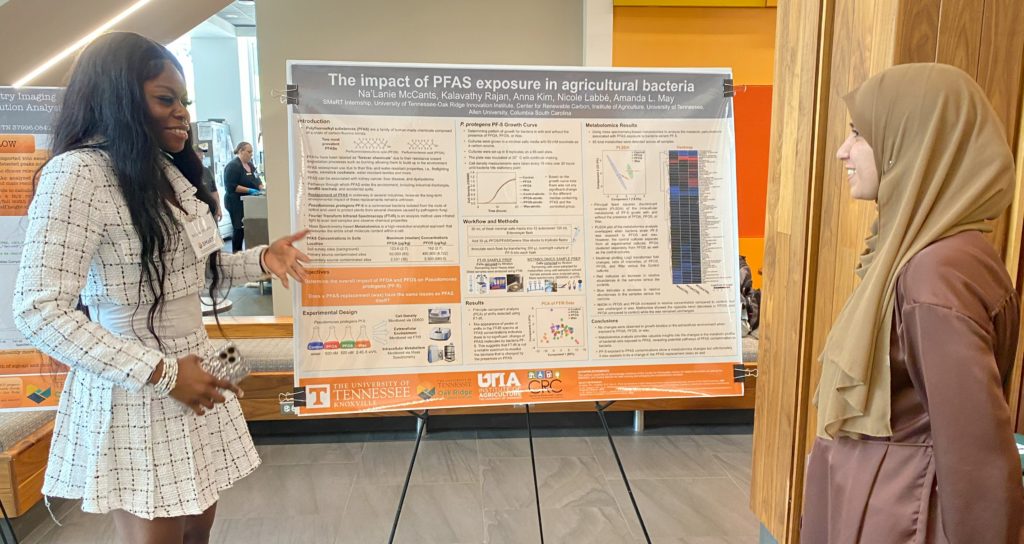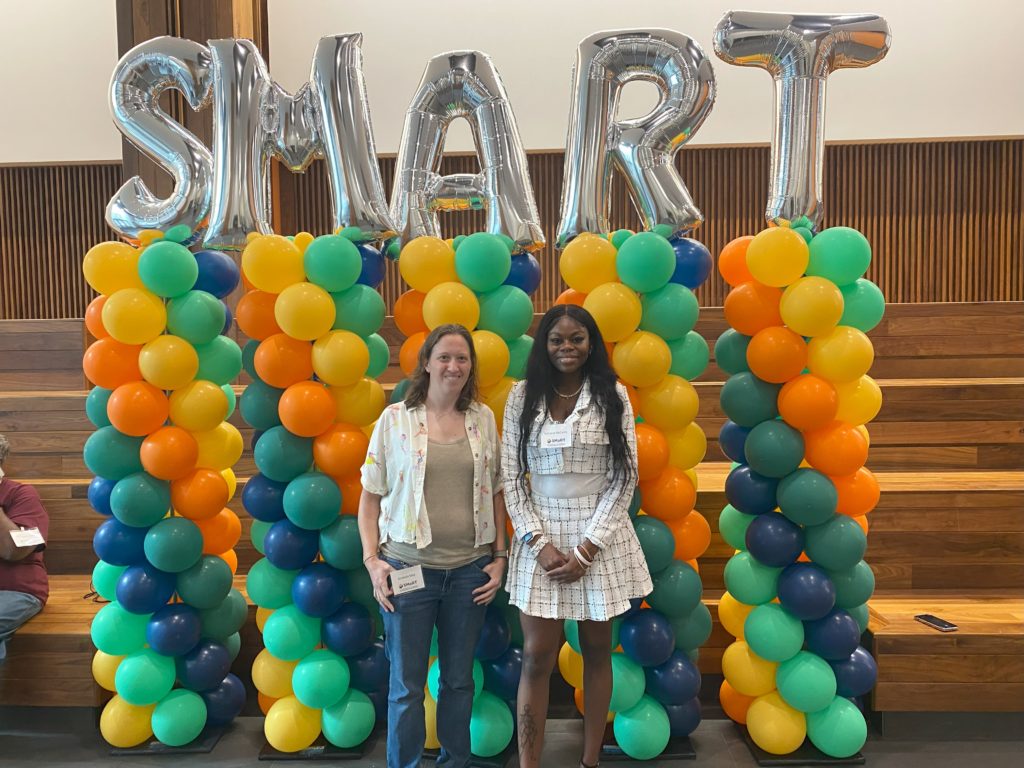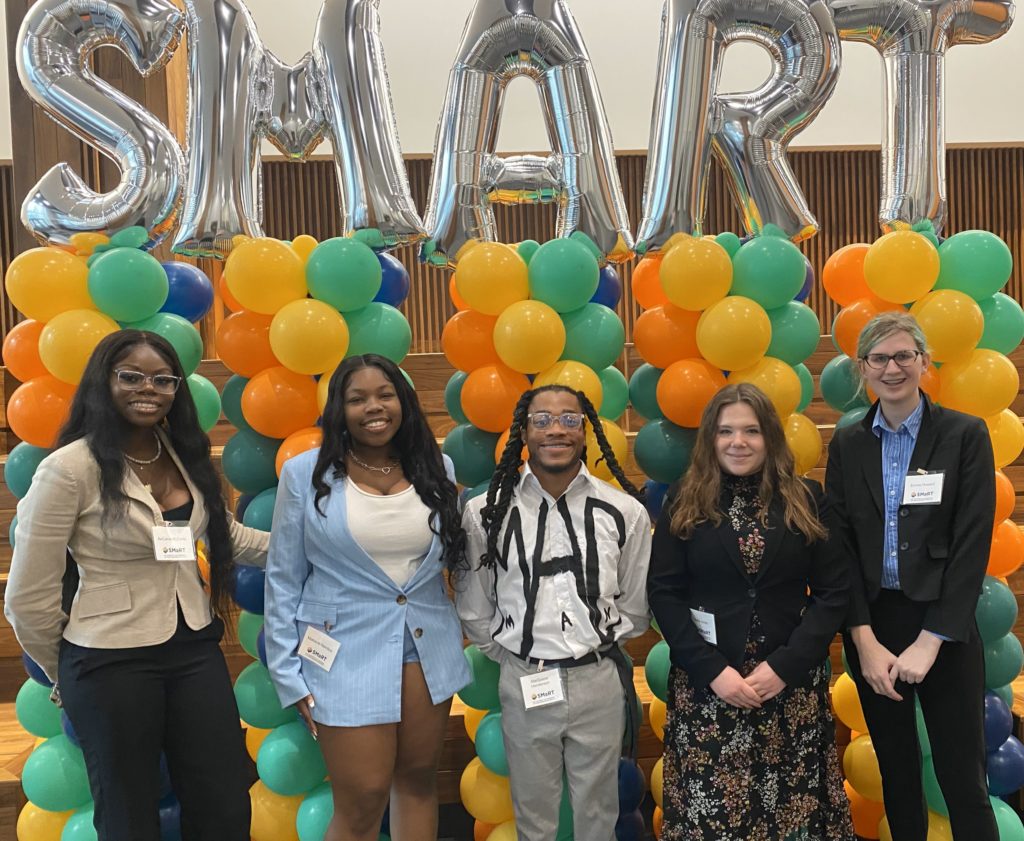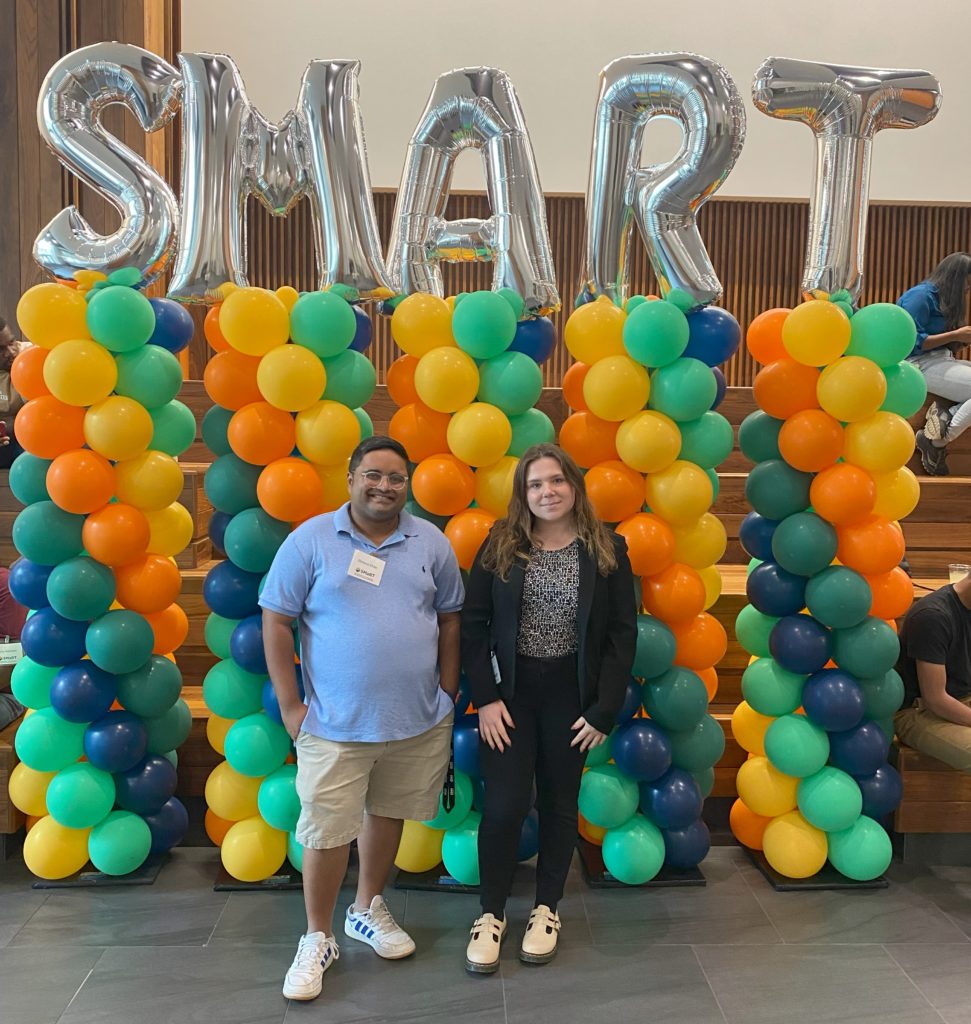
The Center for Renewable Carbon was pleased to host several Student Mentoring and Research Training program (SMaRT) interns this summer. The students worked in various labs at the CRC, and last week, they presented their work in a poster session and oral presentations. The students all worked hard this summer and we wish them the best as they return to continue their undergraduate educations!
Makayla Hamilton, rising Junior, Tougaloo College (Graduate Student Mentor: Kailong Zhang, PI: Mi Li)
For the past couple of months, I’ve had the privilege of working at the Carbon Renewable Center with Kailong Zhang under Dr. Li’s Lab. Here we worked on and researched, “In situ growth of AIE-based metal-organic frameworks in wood for the development of luminescent paper.” We used natural balsa wood and developed a functional wood material, luminescent wood film (LWF). The balsa wood was delignified and treated with Tempo Oxidation to create a transparent wood film using a simple top-down technique. Then the pretreated wood was incorporated with a MOF precursor. The luminescent wood film was developed after simply densifying in the air. The LWF is eco-friendly and can potentially replace petroleum-based plastic materials. It can also potentially be applied as a sensor for volatile organic compounds.
Additionally, I am truly honored to have been part of this fruitful collaboration, and I am excited about the potential impact our findings could have in the field. The experience has not only enriched my academic and professional growth but has also ignited a strong desire to continue engaging in meaningful research projects in the future.
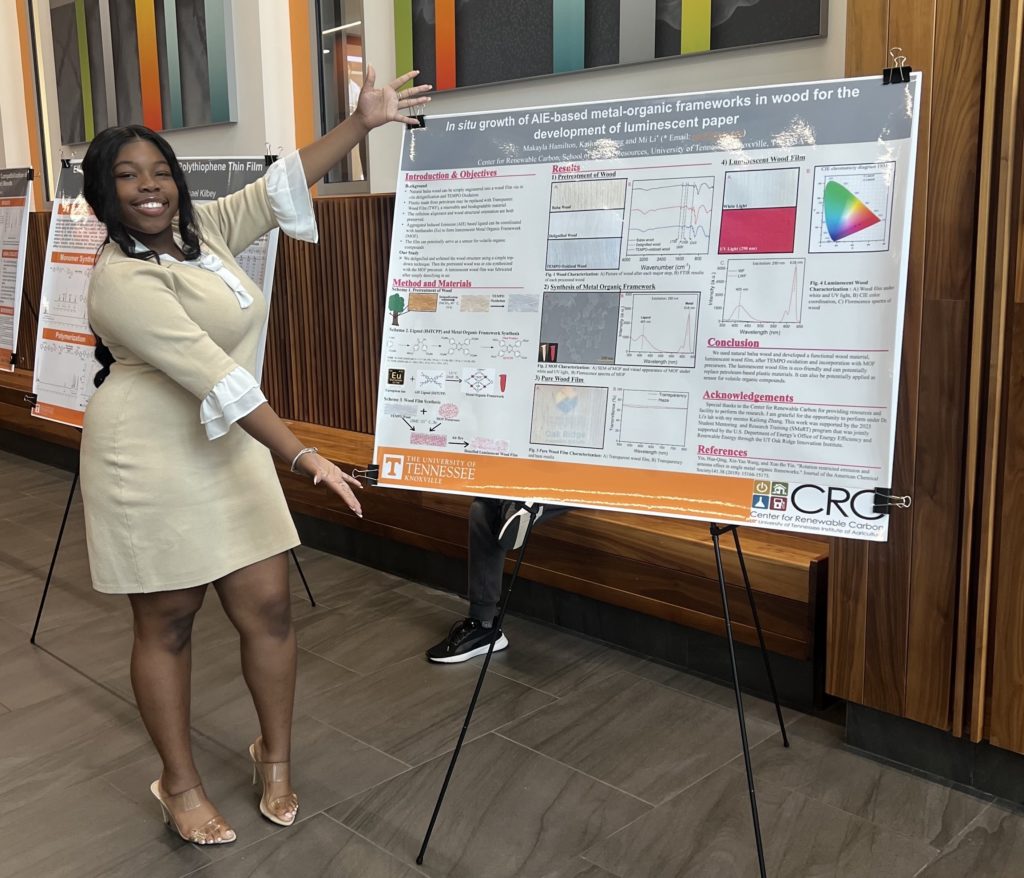
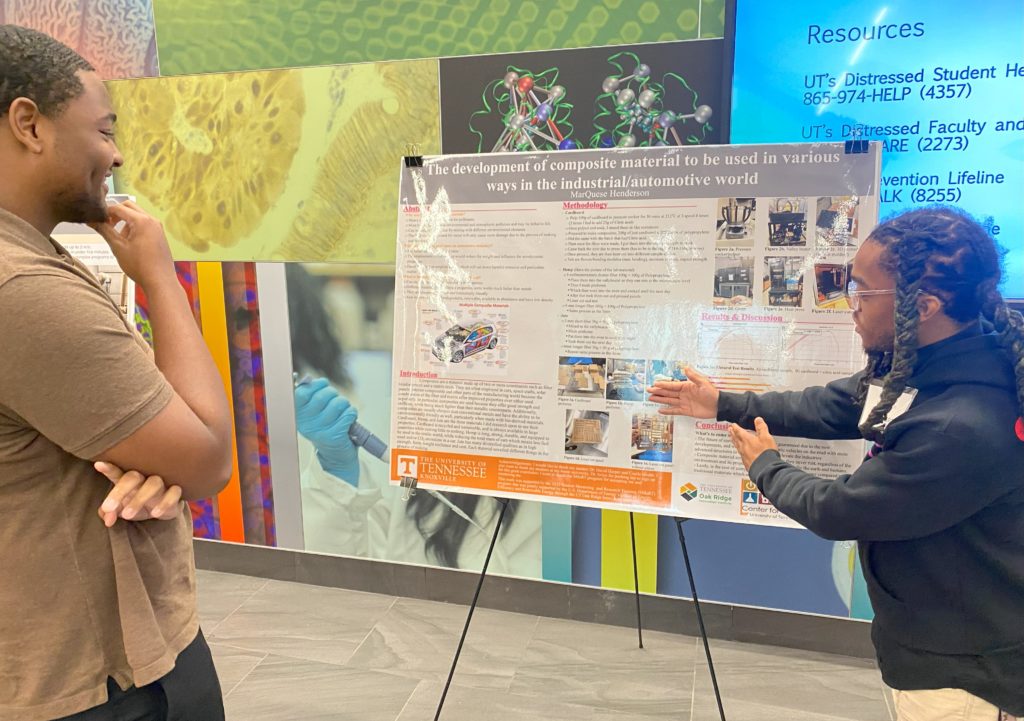
MarQuese Henderson, rising Senior, Allen University (Graduate Student Mentor: Cecilia Grubb and Jonah Brown, PI: David Harper)
This summer I’ve had the honor to work under the great Dr. David Harper in the CRC Material Science & Technology unit. In this unit of Science, I was able to gain a grand amount knowledge about Composites, Resins, and things that could help the environment. A composite is materials made up of two or more constituents such as fiber reinforcement and a matrix resin. The materials that I am currently producing/studying is cardboard. Soon I will have hemp, and a few other materials you wouldn’t expect to be used in various ways. With this cardboard I am testing many different things. Like flexural impact, water absorption, hardness, and overall sustainability. These materials being tested are hopefully going to be used in Volkswagen’s cars. The car industry and many other industries are moving towards more of environmentally friendly things as such in order to decrease the use of nonrenewable resources and environmental harm.
Emma Howard, rising Senior, University of Tennessee, Knoxville (Graduate Student Mentor: Cece Grubb and Jonah Brown, PI: David Harper)
By 2040, original equipment manufacturers (OEMs) are targeting net-zero carbon emissions. With the replacement of combustion engines, CO2 emissions while the automobile is used are decreasing. However, now it is predicted that the overall life cycle of the car remains an issue. The materials used for the vehicle are now being considered to achieve a net-zero CO2 footprint. This research works alongside Volkswagen’s development of a paper fiber composite. The composite developed degrades during the recycling process. This research screens additives to implement into the composite to retain properties, achieving a composite consistent with the circular economy.
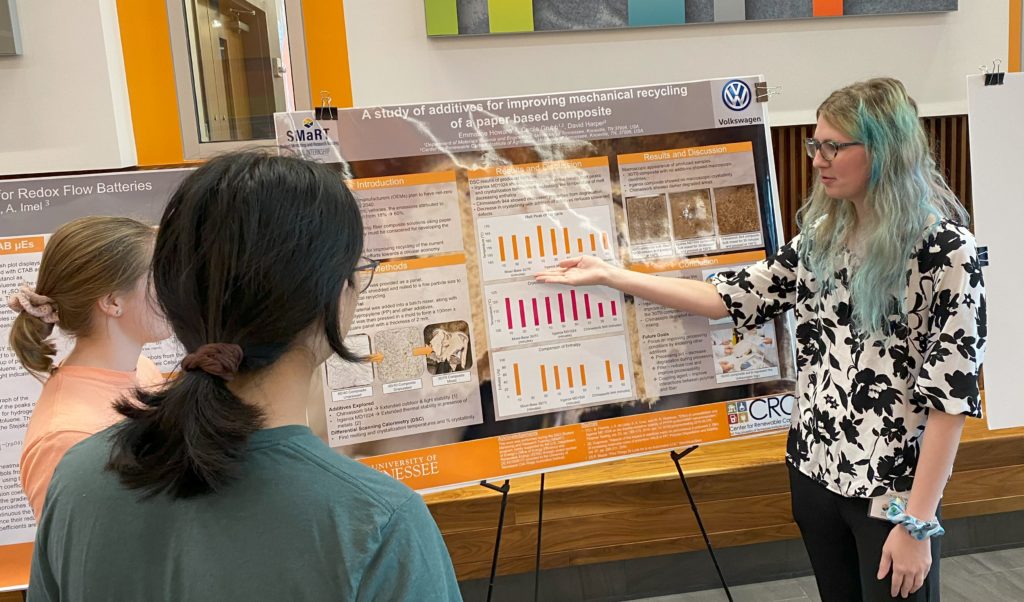

Katie Jones, rising Sophomore, University of South Carolina, Columbia (Graduate Student Mentor: Ekramul Ehite, PI: Nour Abdoumoumine)
Biomass makes up a substantial portion of renewable energy that is produced. Lignocellulosic biomass in particular is an abundant and relatively inexpensive type of biomass. After being harvested and grinded into smaller particles, the lignocellulosic biomass is processed into usable biofuels at bio refineries. The issue is: at these plants the biomass may clog due to the wide variance of biomass size. Our project focused on the analysis of the physiochemical properties and particle size of three types of lignocellulosic biomass. By doing so, we may have a better understanding of biomass particles and how to best accommodate the particles for maximum efficiency in bio refineries.
Na’Lanie McCants, rising Sophomore, Allen University (PIs: Amanda May and Niki Labbé)
During this past summer, I had the privilege of engaging in research at the Center of Renewable Carbon, working under the guidance of Dr. Amanda May. My research focused on a topic previously unfamiliar to me: the impact of PFAS exposure in agriculture. PFAS, commonly referred to as “forever chemicals,” are in various household products. My investigation aimed to identify the influence of PFAS on the growth of agricultural bacteria, particularly the Pseudomonas strain, and to compare this impact with that of a potential PFAS replacement in the form of wax.
Employing a growth curve analysis, I examined the interaction between PFAS and Pseudomonas bacteria, striving to identify patterns in their growth dynamics in the presence or absence of PFOA, PFOS, or the substitute wax. Additionally, I delved into the extracellular environment using Fourier Transform Infrared Spectroscopy (FT-IR) and explored the intracellular metabolism through the application of Mass Spectrometry. In my study it is noteworthy that no distinct differences were observed in growth kinetics or the extracellular under the influence of PFOA, PFOS, or the replacement wax. Nevertheless, my experiment into the metabolism shed light on potential pathways of PFAS contamination within bacterial systems. Regrettably, this analysis also revealed modifications in the PFAS replacement wax. Further more my summer research experience has provided valuable insights into the complex interplay between PFAS exposure, bacterial growth, and potential alternatives. This experience has been a remarkable journey of discovery within the Center of Renewable Carbon, further enriching my understanding of the world of environmental chemistry.
